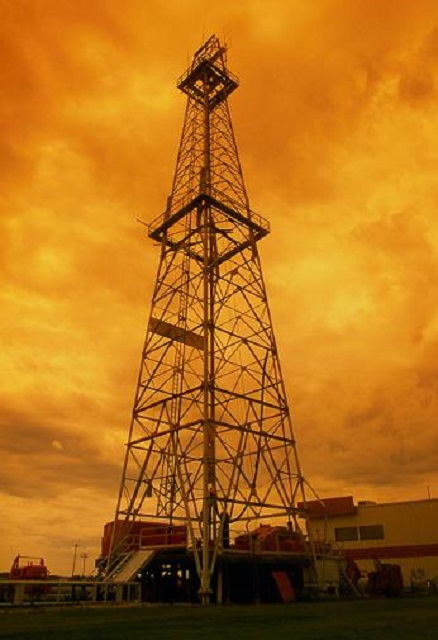Energy
The “Just Transition” Soviet style plans for Canada’s oilpatch

From the Frontier Centre for Public Policy
By Brian Zinchuk
The “Just Transition” legislation currently before the House of Commons Natural Resources Committee mentions unions a fair bit. It also mentions what are effectively five-year plans, which was a common practice for molding the economies of the Soviet Union and China, during their darkest years.
However, outside of big-inch pipeline construction, refining and the oil sands, there’s simply aren’t that many unionized companies in the oilpatch, at least in Saskatchewan. As in, next to none in the Land of Living Skies.
The legislation is question is Bill C-50, the Canadian Sustainable Jobs Act. The act is meant to assist workers in what the federal government had previously referred to as a “just transition,” away from fossil fuels-related jobs towards more “sustainable jobs.” It will create a “Sustainable Jobs Partnership Council” to draft five-year plans to do just that.
The Act’s full name is “An Act respecting accountability, transparency and engagement to support the creation of sustainable jobs for workers and economic growth in a net-zero economy.”
Specifically, Sec. 7 (a.) of the legislation focuses on unions. It says the Sustainable Jobs Partnership Council’s responsibilities include “advising the Minister and specified Ministers on strategies and measures to encourage growth in good-paying, high-quality jobs — including jobs in which workers are represented by a trade union — in a net-zero economy.”
That council also is supposed to have a balance of members who represent labour, Indigenous organizations and industry.
The thing is, there are no unions on drilling rigs. Or service rigs, for that matter.
I asked Mark Scholz, president of the Canadian Association of Energy Contractors (CAOEC) about this on Nov. 10. He said, “We do not have any unionized drilling or service rigs operating in Western Canada. Most of the oil and gas industry unionization is in the Alberta oilsands or LNG construction in British Columbia. As well, there are some drilling rig platforms operating off the coast of Newfoundland.”
He explained in Alberta and Saskatchewan, on service rigs, drilling rigs and directional drilling, there are no unions representing workers. And the CAOEC represents the companies operating almost every rig working in the oilpatch.
“In the drilling and service rig industry in Western Canada, there are no unions. That is just a simple fact,” he said.
Indeed, in 15 years of covering the Saskatchewan oil industry, and five years building pipelines prior to that, I’ve only encountered unionized workforces at the Regina Co-op Refinery Complex, and in big-inch pipeline construction contractors working for TC Energy, Enbridge, TransGas and Alliance Pipelines. I was one of those union pipeline workers.
But I’ve found them nowhere else, although there may be one unionized electrical firm operating in the Saskatchewan oilpatch.
Unionized labour is prevalent in the oil sands, however.
The legislation says this Sustainable Jobs Partnership Council must present an action plan by Dec. 31, 2025, and every five years after that. The government would also for a “Sustainable Jobs Secretariat”
Its role would be “enabling policy and program coherence in the development and implementation of each Sustainable Jobs Action Plan, including by coordinating the implementation of measures set out in those plans across federal entities, including those focused — at the national and regional level — on matters such as skills development, the labour market, rights at work, economic development and emissions reduction.”
It would also support the preparation and track the progress of the five-year plans, coordinate specific federal-provincial initiatives related to the plan, and provide administrative and policy support to the council.
For those who might not know their history, five year plans were a primary feature of economy of the Soviet Union under Joseph Stalin and the People’s Republic of China under Mao Tse-tung. They were the primary instrument for central planning of the economy in each of those nations, often resulting in massive transformations of industries and workforces, something the “Just Transition” legislation is designed to do – transform the oilpatch workforce into “sustainable jobs.”
The first Soviet five-year plan concentrated on developing heavy industry and collectivizing agriculture – directly leading into the Holodomor and the starvation of millions. My family was fortunate enough to get out of the Polish portion of Ukraine in 1930, just before the Holodomor began across the border in Soviet Ukraine in 1931.
This “Just Transition,” and its fitting upcoming five-year plan to totally revolutionize one of our key primary industries and workforce borrows just a little too much from history. We saw how that worked out.
Brian Zinchuk is editor and owner of Pipeline Online, and occasional contributor to the Frontier Centre for Public Policy. He can be reached at [email protected].
Daily Caller
AI Needs Natural Gas To Survive


From the Daily Caller News Foundation
By David Blackmon
As recent studies project a big rise in power generation demand from the big datacenters that are proliferating around the United States, the big question continues to focus in on what forms of generation will rise to meet the new demand. Most datacenters have plans to initially interconnect into local power grids, but the sheer magnitude of their energy needs threatens to outstrip the ability of grid managers to expand supply fast enough.
This hunger for more affordable, 24/7 baseload capacity is leading to a variety of proposed solutions, including President Donald Trump’s new executive orders focused on reviving the nation’s coal industry, scheduled to be signed Tuesday afternoon. But efforts to restart the permitting of new coal-fired power plants in the US will require additional policy changes, efforts which will take time and could ultimately fail. In the meantime, datacenter developers find themselves having to delay construction and completion dates until firm power supply can be secured.
Datacenters specific to AI technology require ever-increasing power loads. For instance, a single AI query can consume nearly ten times the power of a traditional internet search, and projections suggest that U.S. data center electricity consumption could double or even triple by 2030, rising from about 4-5% of total U.S. electricity today to as much as 9-12%. Globally, data centers could see usage climb from around 536 terawatt-hours (TWh) in 2025 to over 1,000 TWh by 2030. In January, a report from the American Security Project estimated that datacenters could consume about 12% of all U.S. power supply.
Obviously, the situation calls for innovative solutions. A pair of big players in the natural gas industry, Liberty Energy and Range Resources, announced on April 8 plans to diversify into the power generation business with the development of a major new natural gas power plant to be located in the Pittsburgh area. Partnering with Imperial Land Corporation (ILC), Liberty and Range will locate the major power generation plant in the Fort Cherry Development District, a Class A industrial park being developed by ILC.
“The strategic collaboration between Liberty, ILC, and Range will focus on a dedicated power generation facility tailored to meet the energy demands of data centers, industrial facilities, and other high-energy-use businesses in Pennsylvania,” the companies said in a joint release.
Plans for this new natural gas power project follows closely on the heels of the March 22 announcement for plans to transform the largest coal-fired power plant in Pennsylvania, the Homer City generating station, into a new gas-fired facility. The planned revitalized plant would house 7 natural gas turbines with a combined capacity of 4.5 GW, enough power 3 million homes.
Both the Homer City station and the Fort Cherry plant will use gas produced out of the Appalachia region’s massive Marcellus Shale formation, the most prolific gas basin in North America. But plans like these by gas companies to invest in their own products for power needs aren’t isolated to Pennsylvania.
In late January, big Permian Basin oil and gas producer Diamondback Energy told investors that it is seeking equity partners to develop a major gas-fired plan on its own acreage in the region. The facility would primarily supply electricity to data centers, which are expected to proliferate in Texas due to the AI boom, while also providing power for Diamondback’s own field operations. This dual-purpose approach could lower the company’s power costs and create a new revenue stream by selling excess electricity.
Prospects for expansion of gas generation in the U.S. received a big boost in January when GE Vernova announced plans for a $600 million expansion of its manufacturing capacity for gas turbines and other products in the U.S. GE Vernova is the main supplier of turbines for U.S. power generation needs. The company plans to build 37 gas power turbines in 2025, with a potential increase to over 70 by 2027, to meet rising energy demands.
The bottom line on these and other recent events is this: Natural gas is quickly becoming the power generation fuel of choice to feed the needs of the expanding datacenter industry through 2035, and potentially beyond. Given that reality, the smart thing to do for these and other companies in the natural gas business is to put down big bets on themselves.
David Blackmon is an energy writer and consultant based in Texas. He spent 40 years in the oil and gas business, where he specialized in public policy and communications.
Bjorn Lomborg
The stupidity of Net Zero | Bjorn Lomborg on how climate alarmism leads to economic crisis

From spiked on YouTube
Note: This interview is focused on Europe and the UK. It very much applies to Canada. The 2025 Federal Election which will see Canadians choose between a more common sense approach, and spending the next 4 years continuing down the path of pursuing “The Stupidity of Net Zero”.
European industry is in freefall, and Net Zero is to blame.
Here, climate economist Bjorn Lomborg – author of Best Things First and False Alarm – explains how panic over climate change is doing far more damage than climate change itself. Swapping cheap and dependable fossil fuels for unreliable and expensive renewables costs our economies trillions, but for little environmental gain, Lomborg says.
Plus, he tackles the myth of the ‘climate apocalypse’ and explains why there are more polar bears than ever.
Support spiked: https://www.spiked-online.com/support/
Sign up to spiked’s newsletters: https://www.spiked-online.com/newslet…
-

 Business2 days ago
Business2 days agoStocks soar after Trump suspends tariffs
-

 COVID-192 days ago
COVID-192 days agoBiden Admin concealed report on earliest COVID cases from 2019
-

 Business2 days ago
Business2 days agoScott Bessent Says Trump’s Goal Was Always To Get Trading Partners To Table After Major Pause Announcement
-

 2025 Federal Election1 day ago
2025 Federal Election1 day agoResearchers Link China’s Intelligence and Elite Influence Arms to B.C. Government, Liberal Party, and Trudeau-Appointed Senator
-

 Business1 day ago
Business1 day agoTimeline: Panama Canal Politics, Policy, and Tensions
-

 2025 Federal Election2 days ago
2025 Federal Election2 days agoRCMP memo warns of Chinese interference on Canadian university campuses to affect election
-

 2025 Federal Election2 days ago
2025 Federal Election2 days agoThe status quo in Canadian politics isn’t sustainable for national unity
-

 COVID-191 day ago
COVID-191 day agoFauci, top COVID officials have criminal referral requests filed against them in 7 states





